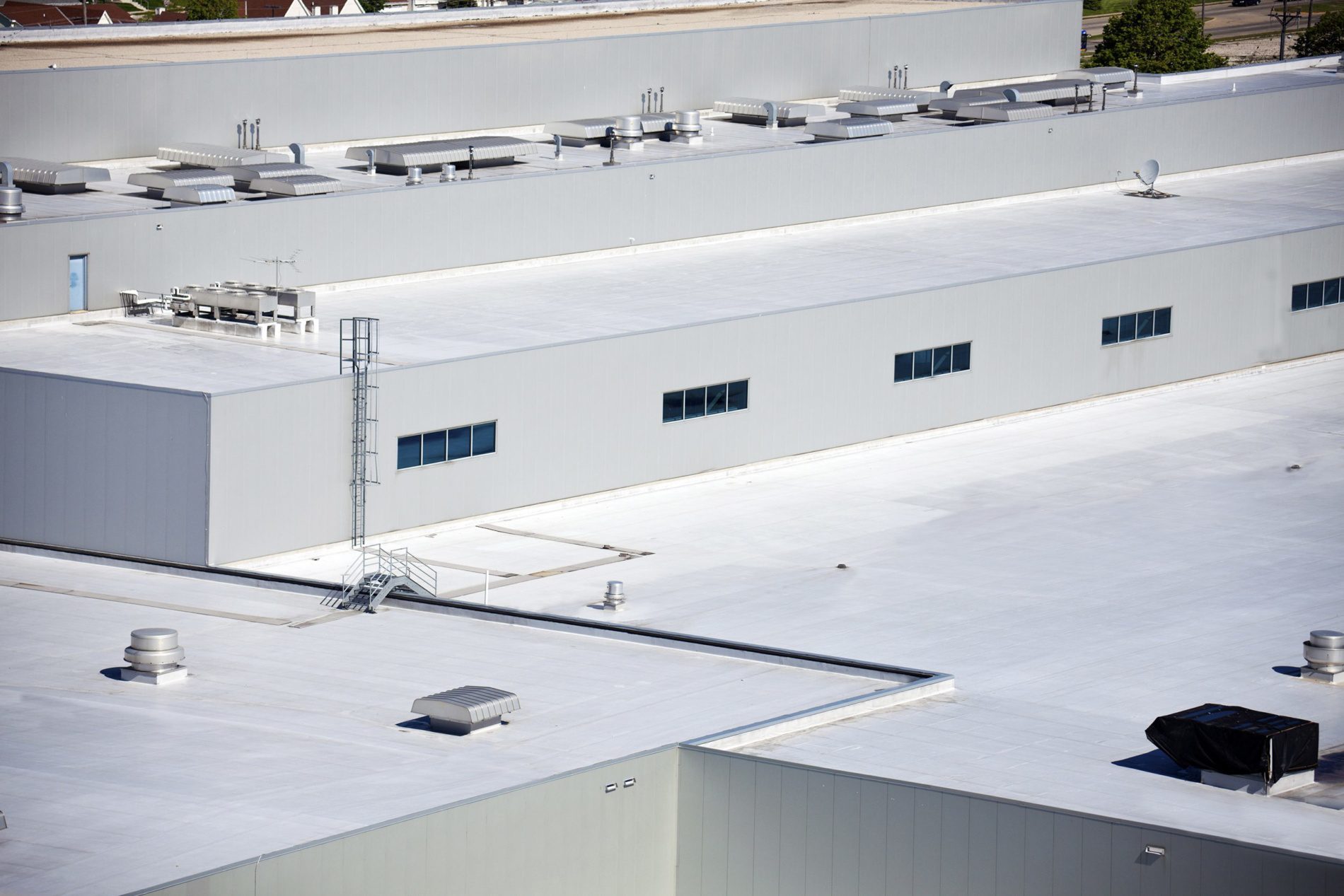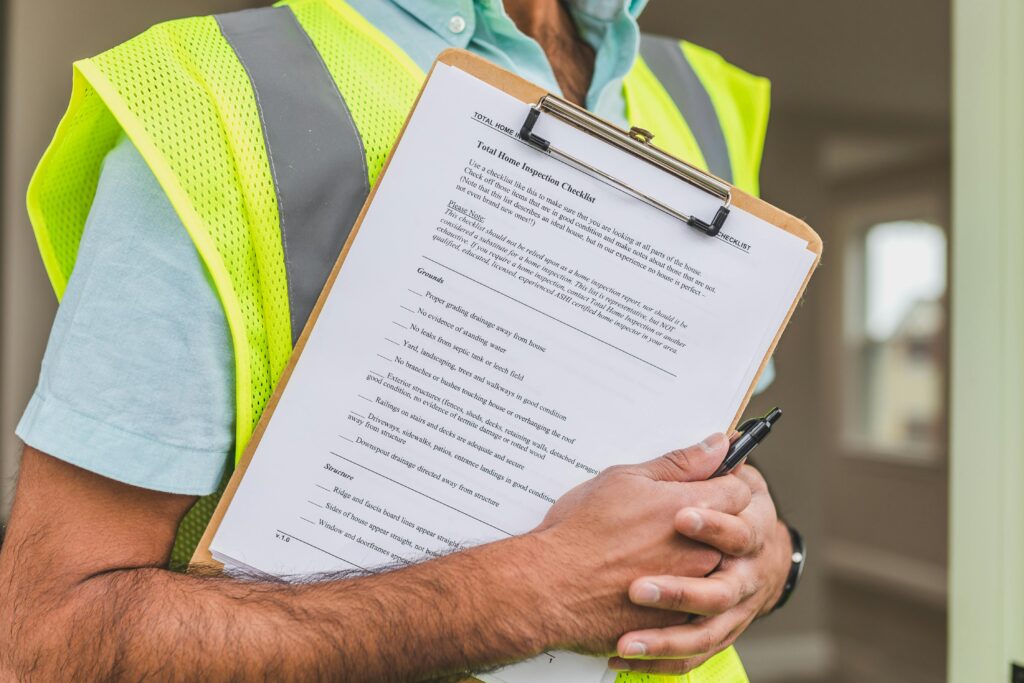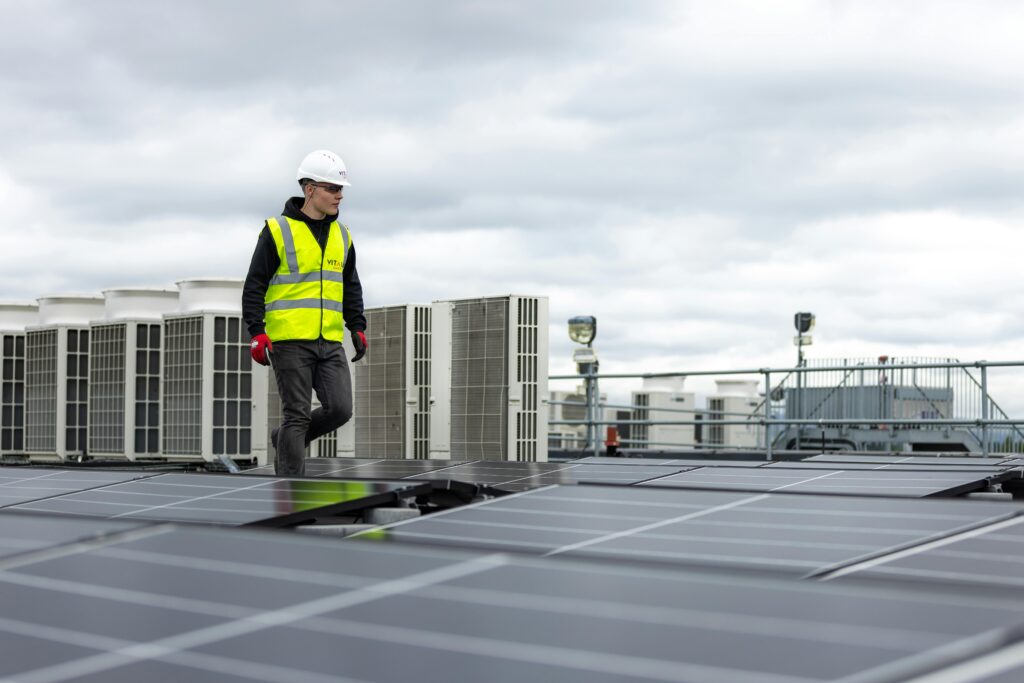There are several different commercial roof types. Most commercial roofs are flat or low-sloped roofs, which means they can’t use traditional roofing shingles like residential properties can.
Instead, commercial properties need robust materials designed for the shape of the roof in order to properly shed water and protect the structure beneath. While not every business has a flat roof, most commercial roofing materials are designed for buildings that have larger, low-sloped roofing systems.
What are some of the most popular types of commercial roofs? The following are five common materials that different types of businesses use for roofing, including apartment buildings, restaurants, medical facilities, schools, and office buildings.
Popular Commercial Roof Types
1. EPDM
EPDM stands for ethylene propylene diene monomer. A type of single-ply membrane rubber roofing material, EPDM can last between 15 and 20 years if properly maintained. EPDM roofs are black, unlike the white roofs some commercial buildings have.
Ideal for low-slope and flat roofs, EPDM roofs are resistant to damage from hail, high winds, and ice. EPDM is an excellent material to consider for large commercial or industrial roofs because of the size it comes in. Constructed out of a synthetic rubber, the material is subject to blistering when it reaches the end of its life.
As one of the more affordable commercial roof types to install and maintain, EPDM can give business owners a lot of value for the money. Its dark color makes it inconspicuous on roofs and can provide a neater appearance.
Professional roofers can install EPDM in a few ways. You can choose a fully adhered system, a mechanically fastened system, or a ballasted system. You can also apply a roof coating over EPDM to extend its lifespan.
2. Green Roofing
A green roof is a commercial roofing system that’s designed to grow plants and trees. These systems are typically used in urban settings on apartment buildings, office buildings, and other commercial structures.
Green roofing systems are more complex to install than asphalt-based or single-ply materials. They have several layers to them, including a drainage layer to ensure the moisture plants and trees need doesn’t make its way into your building. Green roofs also have a root barrier and waterproof membrane that protect the roof’s deck from being affected by moisture and root damage.
Green roofs offer the benefit of creating an attractive and eco-friendly roofing system. However, they also last a long time. Green roofing systems can last decades, up to 50 years and, in many cases, longer before they need work.
Roofs with vegetation don’t shed water the way traditional flat roofs do. When it rains, the water is mostly absorbed by the plants and the substrate. Depending on the season, vegetation on your roof will absorb the majority of rainwater that falls and the drainage layer will carry the rest of the water away from your structure.
Should the membrane beneath the vegetation and drainage layer or the root barrier become compromised, your green roof could cause interior moisture or structural damage, and you’ll need to start thinking about replacing the membrane or doing additional work to the roof.
3. Modified Bitumen
Modified bitumen isn’t a single-ply membrane material, unlike EPDM, TPO, and PVC. Instead, it’s an asphalt-based commercial roofing system that’s similar to built-up roofing. Modified bitumen has several layers, including insulation, a membrane, and adhesive, to protect commercial buildings and support energy efficiency.
Since modified bitumen is a thicker roofing material, it’s a great choice for roofing areas that see a lot of foot traffic. It also holds up well in cold weather to resist cracking and damage. Modified bitumen also tends to come in smaller rolls than single-ply materials, which can make it easier to apply to compact roofing spaces.
As modified bitumen ages, it may be prone to cracking and wearing of the asphalt. However, these roofing systems can last 20 years with proper maintenance. Modified bitumen can also be coated with a rubber roof coating to extend its life.
4. PVC
Polyvinyl chloride (PVC) roofs are single-ply membranes that are white in color. They are known as cool roofs thanks to their ability to reflect the sun’s rays, which can help support your building’s energy efficiency.
Installed using heat-welded seams to improve strength and flexibility for your commercial roof, PVC is easy to repair, resistant to punctures, and can last two decades or longer before needing to be replaced. You can customize the thickness and width of your PVC roofing to meet your property’s specific needs.
Since PVC offers durable protection, include resistance to chemicals, it can be used for industrial roofing applications. PVC roofs also offer wind and fire resistance, and can be coated to help seal out damage and extend their life.
Although PVC can be more expensive than other single-ply materials, it’s often well worth the investment for business owners that need a more robust roofing material.
5. TPO
TPO, which stands for thermoplastic polyolefin, is a popular single-ply roofing material. Like PVC, this material is white and reflects sunlight to support energy efficiency. TPO roofs can last up to 30 years when properly maintained.
Resistant to fire, sun damage, and chemicals, TPO roofs work for both low-slope and flat roofing systems. TPO also resists damage from algae, which can help prevent buildup of this unsightly material on your roof. TPO can be installed a few different ways—with adhesive, with mechanical fasteners, or with heat-welding, depending on the specific product you choose.
A few of the benefits of TPO roofing include flexibility, its ability to reflect the sun’s rays, and its strength. Many business owners choose TPO to combine the benefits of PVC and EPDM roofing. TPO roofs can be coated as they age to prevent damage and prolong their life.
Which Commercial Roof Type is Right for You?
The commercial roof type that’s right for you will depend on your building’s location, your preferences, and your budget. The right roofing material won’t be the same for every business, especially when it comes to low-slope and flat roofing applications. Get a free consultation.




